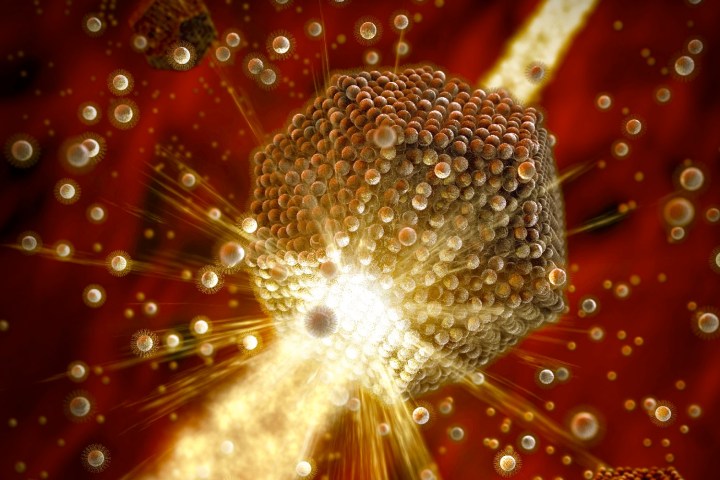
The discovery opens up the possibility of developing new materials with unique, specially tuned properties for use in magnetic storage, improved solar cells, optoelectronics, catalysis, and more. Because of the size of the artificial atoms, they are governed by quantum mechanics, which presents a new range of possibilities when it comes to their size, shape, and composition. Best of all, contrary to what was originally thought, such materials can be created in mere seconds.
“We are working to develop synthesis methods that would allow us to make small particles with precise control over their size and composition, at a scale of a billionth of a meter,” Matteo Cargnello, an assistant professor of chemical engineering at Stanford, told Digital Trends. “In order to do that, we developed a method to watch these tiny nanocrystals grow in a solution, using synchrotron light to ‘see’ live what happens while we make these crystals. We surprisingly found that at high temperatures, when particles start moving around much faster than at normal temperatures, these nanocrystals start to form and then attract each other into ordered structures in a matter of seconds. The positioning of the nanocrystals in these ordered assemblies can allow us to tune their properties and study interactions between the building blocks that can be relevant for applications of these tiny materials in several fields of materials science and chemical engineering.”
The researchers’ discovery is described in a paper published in the journal Nature. Right now, the researchers are trying to gain a greater understanding of how these superlattices grow to make them more uniform and control their properties.
“There are still questions that require more work and investigations,” Cargnello said. “For example, we are not sure yet how the nanocrystals continue to grow in the solution even after they form the ordered assemblies. We [also] still want to dig deeper into the mechanism of superlattice formation, because this can help us transfer this knowledge to more complex material systems, with multiple components, and to increase the functionality of these materials.”
Make no mistake, though, this could be an enormously significant step in our quest to form new, cutting-edge metamaterials. Did we mention how much we are totally digging the current materials science revolution?



